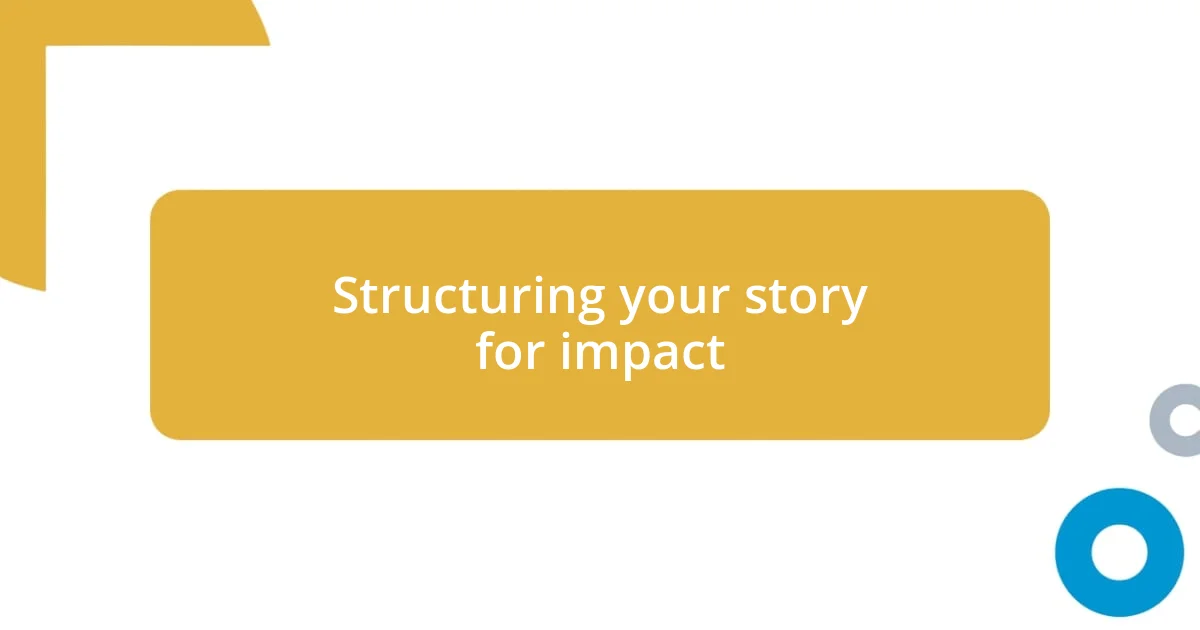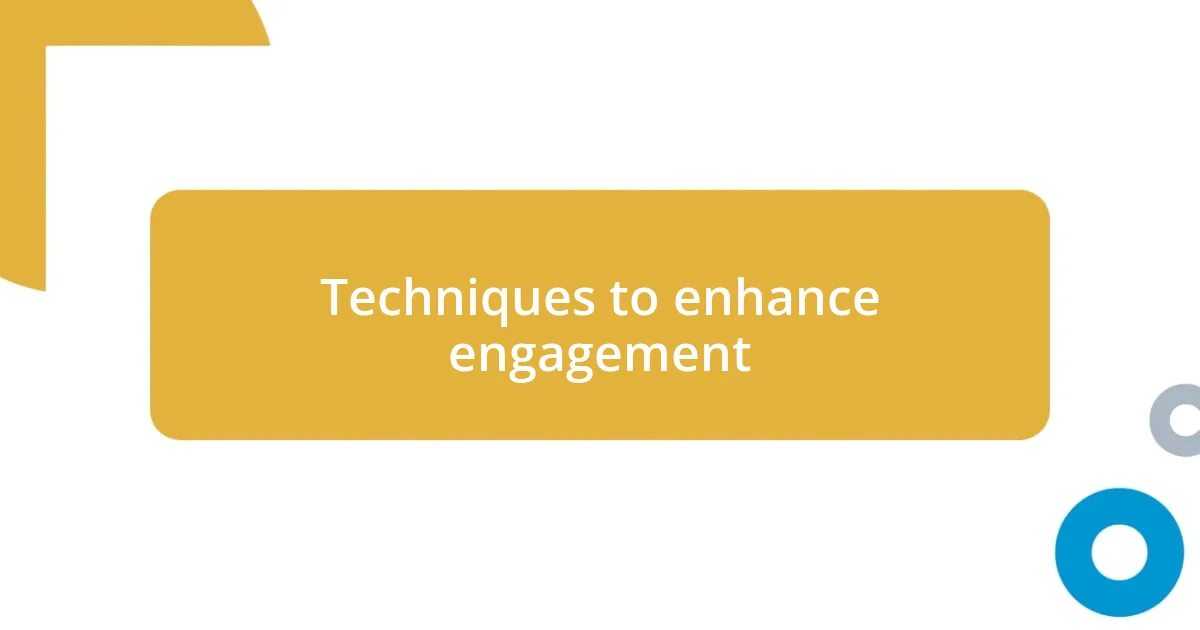Key takeaways:
- Storytelling fosters emotional connections and community engagement by sharing relatable experiences and vulnerabilities.
- Key elements of effective storytelling include relatability, emotional depth, and structuring narratives to maintain reader interest and retention.
- Measuring storytelling success involves tracking engagement metrics, reader retention rates, and soliciting audience feedback to refine future content.

Understanding storytelling in posts
Understanding storytelling in posts is a fascinating journey. Storytelling isn’t just a technique; it’s a way to connect with readers on a deeper level. I remember crafting a post about my first pet, a mischievous little dog. As I recounted the chaos he brought into my life, I noticed how my readers resonated with those shared experiences, leading to a conversation that felt both personal and engaging.
When I weave a narrative into my posts, I often think about the emotional arc of the story. It’s like creating a mini-movie in the reader’s mind. Have you ever felt transported by a simple anecdote? I once shared a moment of vulnerability when I faced failure and the lessons I learned from it. The responses were overwhelming, as many found courage in vulnerability, proving that stories can foster a strong sense of community.
Every post is an opportunity to build a connection, and storytelling is my way of inviting readers into my world. I consciously incorporate sensory details and emotions to paint vivid pictures, allowing others to experience those moments with me. It’s not just about sharing events; it’s about evoking feelings and sparking reflections that can lead to discussions, making the whole experience richer for everyone involved.

Benefits of storytelling in content
Storytelling in content creates a unique bond between the writer and the audience. I found that when I shared stories about my travels, the experiences became more than mere words; they transformed into shared memories. My readers often commented on how they felt as if they were right there with me, experiencing the sights and smells of new places. This immersive aspect of storytelling cultivates loyalty.
Another incredible advantage of storytelling is its ability to simplify complex ideas. I remember discussing a complicated topic about digital marketing strategies through a story of my own business struggles. By narrating my hurdles and victories, I made the content accessible and relatable, helping readers grasp concepts without feeling overwhelmed. It’s astonishing how a good story can turn dense material into something digestible and engaging.
Additionally, stories tend to stick in people’s minds far longer than isolated facts or statistics. I often use humor or unexpected twists in my anecdotes, which not only entertain but also encourage recall of key points I want to communicate. For instance, sharing a humorous mishap during a marketing campaign kept my audience laughing and remembering the serious lessons behind it. This personal connection through storytelling enhances learning and retention in a way that traditional content can’t match.
| Benefit | Description |
|---|---|
| Connection | Establishes emotional bonds with the audience through shared experiences. |
| Simplification | Breaks down complex ideas into relatable narratives for easier understanding. |
| Retention | Enhances memory recall of key points through engaging, memorable anecdotes. |

Key elements of effective storytelling
Effective storytelling hinges on several key elements that help forge a deep connection with the audience. One of the most significant aspects is relatability. When I share a tale about a tough day navigating traffic, I often see readers nodding along, nodding along as they likely have encountered their own commuting fiascos. It’s those shared struggles that turn a simple narrative into an engaging dialogue, making the story resonate on a personal level.
Another fundamental element is emotional depth. I always strive to incorporate feelings that evoke empathy or joy. For instance, in a recent post, I recounted the bittersweet moment of sending my child off to college. The mixture of pride and sadness I felt struck a chord with many parents. By tapping into those raw emotions, I leave my audience with something memorable, enabling them to reflect on their own experiences.
- Relatability: Stories that echo universal experiences invite readers to connect more deeply.
- Emotional depth: Infusing narratives with genuine feelings fosters empathy, sparking reflections.
- Resonance: Crafting moments that stick in the mind ensures that the essence of the story lingers long after reading.

Crafting relatable characters in posts
When I craft characters in my posts, I always think about the little traits that make them feel like real people. For instance, I once created a character who was constantly misplacing his favorite mug, something I do constantly myself! This quirky detail made him relatable, and I found readers were quick to share their own mug mishaps in the comments, creating a wonderful sense of community among us.
Another aspect I consider is the background of my characters. I often draw from experiences of friends or even my own past. For example, I wrote about a character who struggled with self-doubt in high school, mirroring a time when I too felt out of place. I noticed that sharing this vulnerability fostered a connection with readers who had similar experiences. We’ve all had moments of insecurity, right? It’s these little snippets of life that help build a bridge between my characters and the audience.
I also like to incorporate goals or dreams my characters aspire to achieve. Recently, I featured a character who dreamed of becoming a writer but was held back by fear. I can’t tell you how many people reached out, expressing how they felt that same fear. It’s amazing how tapping into these aspirations can resonate, encouraging readers to reflect on their own dreams and challenges. By weaving in these relatable elements, I not only create memorable characters but also invite readers to see parts of themselves within the stories I tell.

Structuring your story for impact
When structuring a story for maximum impact, I often begin with a strong hook. It’s that moment when I create a scene so vivid that readers feel they’re right there with me. For example, I once started a post with a detailed description of a stormy night, complete with the sounds of raindrops tapping against the window and the distant rumble of thunder. This immediately drew my audience in, inviting them to share in the tension and anticipation that followed.
Transitioning from that initial hook, I focus on building a compelling arc. In one story, I shared my experience of overcoming a health scare, and I structured it to emphasize the tension leading up to my diagnosis, then delving into the emotions I felt at that moment. This method not only kept my audience engaged but also allowed them to ride the emotional rollercoaster with me. Have you ever faced a pivotal moment that changed the course of your life? Inviting readers to reflect on their own experiences creates a powerful connection.
Lastly, I often conclude with a strong message or insight. Wrapping up my story with what I learned or a takeaway makes it resonate even after they’ve finished reading. In a recent post about pursuing my passion for writing, I ended with a reminder of the importance of taking risks. This structured ending often encourages readers to think about how they can apply those insights in their own lives, making the impact of my story last well beyond the final sentence. How do you like to conclude your stories? What lingering thoughts do you want to leave your audience with?

Techniques to enhance engagement
One technique I find invaluable for enhancing engagement is using sensory details to create a vivid atmosphere. Recently, when I wrote about a day spent at a bustling market, I painted a picture of vibrant colors, the aroma of spices wafting through the air, and the cheerful chatter of vendors haggling with customers. These sensory elements not only invite readers to visualize the scene but also evoke feelings that resonate with their own experiences. Have you ever found yourself transported by a description? It’s those little touches that pull readers right into the heart of the story.
Another powerful strategy is to employ cliffhangers or unanswered questions. In one post, I left my audience hanging by sharing a story about an unexpected encounter that changed my perspective on friendship, but I paused before revealing the outcome. This tactic not only builds anticipation but also compels readers to return for the resolution. I’ve noticed that this technique prompts lively discussions in the comments as readers speculate on what might happen next. Isn’t it fascinating how a little suspense can spark such curiosity?
Additionally, I love incorporating dialogue that feels genuine and relatable. A recent piece featured a conversation with my best friend about our wild ambitions—one moment we were laughing about our dreams of ridiculous fame, the next we were getting real about our fears. This blend of humor and honesty allowed readers to find pieces of themselves in our words. Have you ever found a line of dialogue that perfectly captured a moment? Authentic conversations can transform a simple narrative into a memorable exchange, making readers feel like they’re part of the story.

Measuring success of storytelling efforts
To measure the success of my storytelling efforts, I often track engagement metrics. I pay attention to comments and shares, which indicate how my narrative resonates with the audience. For instance, when I shared a personal story about overcoming self-doubt, the response was overwhelmingly positive, and that feedback encouraged me to delve deeper into the theme of vulnerability in future posts. Isn’t it rewarding to see your words spark real conversations?
Another way I evaluate my storytelling is by analyzing reader retention rates. I’ve found that posts with compelling stories keep readers engaged from start to finish. After one particular anecdote about a life-changing trip, I noticed a significant drop-off in the middle—an indication that perhaps my pacing could have been improved. This taught me the importance of consistently captivating my audience throughout my narrative. Have you ever considered how important flow is in maintaining interest?
Lastly, I frequently seek direct feedback from my audience through polls or surveys. I remember once asking my readers what aspects of my stories they connected with most. The insights I received were eye-opening; it turned out that they were particularly drawn to moments of struggle and triumph. Tailoring my future stories based on this feedback not only aligns better with my audience’s interests but also enhances the authenticity of my writing. How do you engage your readers in their storytelling journey?














